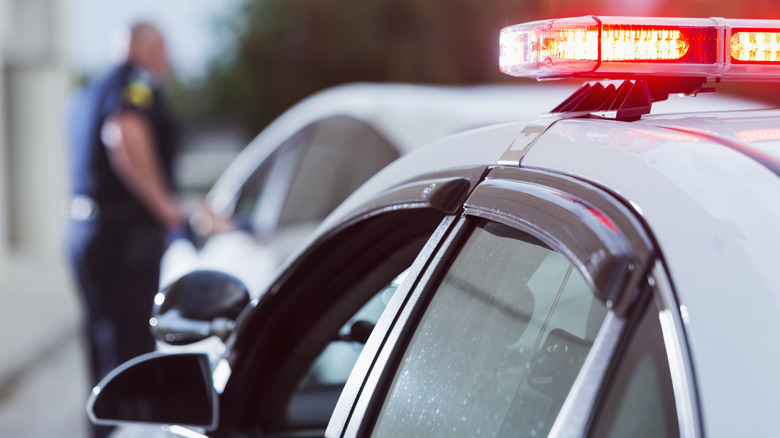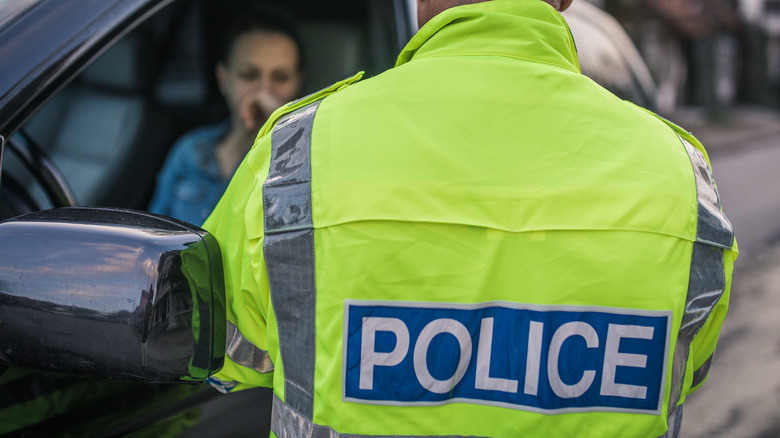Why Do Cops Touch Your Tail Lights If You Get Pulled Over?
It's a sight that no driver ever wants to see — a pair of blue and red lights flashing furiously in their rear windshield. Getting pulled over by a cop is certainly no fun, as there's usually a lot going through a driver's mind in such a scenario. However, cops also have a lot to think about as they approach your vehicle to ensure safety and compliance with the law. Interestingly enough, this mindset is at the root of why some cops will touch a car's tail lights after pulling someone over.
Cops are known for performing acts that confuse drivers, from using yellow lights to swerving on the freeway. But touching tail lights seems like an especially perplexing action to be performed so consistently. In truth, this play a major role in protecting the police officer in the case of a sour situation. A cop's fingerprint on a tail light is meant to be an indicator to other law enforcement officials of the officer's presence.
This procedure can prove imperative for regular interactions that take a dangerous turn according to criminal defense attorney Joe Hoelscher who, in a Reader's Digest interview, stated, "Leaving a thumbprint on the brake light is an old-school way to tag a car with a fingerprint, so it can be identified conclusively as the vehicle involved in a stop should the officer become incapacitated." Along with ensuring the officer's safety, tapping on the headlight can also alert the driver to the cop's approach as well as inform the officer if the trunk is properly secured.
How viable is this method nowadays?
Even though tapping a tail light may seem far from the most dangerous interaction, there's actually a surprising amount of risk that can come from this act. The officer is susceptible to harm in such a position, either from someone potentially hiding in the trunk or the car itself should the driver get startled and suddenly reverse. The very real possibility of this occurring, along with modern day advancements in monitoring and security, has put the necessity of this protocol in question in recent years.
Nowadays, there's a vast array of recording equipment to provide law enforcement with sufficient information should they need it. From police-specific devices such as body and dash cams — the latter of which you can get for your own car no matter your budget level — to CCTV cameras being ever present in high traffic areas, tail light tapping has been viewed as less and less necessary. Some departments have even stopped teaching newcomers how to do this all together.
Even then, it may not be wise to fully rely on technology during a high stakes moment. As a result, some still feel that tail light tapping can allow for an extra bit of security, such as former New Jersey State Police Academy instructor Nick Fresolone, who told Reader's Digest, "It's a simple thing to do, but it could be the only evidence of a police officer's presence in the event of a technological glitch."

